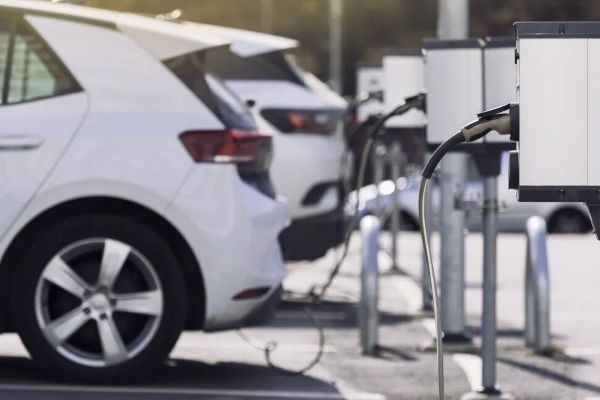


How EV Charging Stations Work: A Complete Guide How EV Charging Stations Work
As a professional EV charger manufacturer in China, Topper Company provides dependable electric vehicle charging stations and comprehensive solutions.
The transition to electric vehicles (EVs) is reshaping the global transportation landscape. Central to this transformation are EV charging stations, which enable the practical and daily use of electric cars. As EV adoption grows worldwide, understanding how charging stations operate becomes increasingly valuable for consumers, businesses, and policymakers alike.
This guide explores the inner workings of EV charging stations—from the moment a vehicle plugs in to when it’s fully charged and ready for the road.
Once an EV is connected to a charging station, the system initiates a digital “handshake”—a communication process between the vehicle and the charger. During this exchange:
The EV reports its battery status, including charge level and health.
The charger validates the connection and confirms safety.
Charging preferences (if any) are shared.
This stage ensures the charger tailors its power delivery to the specific needs of the vehicle.
Before any electricity flows, the station conducts a series of safety checks:
Grounding verification to prevent electrical faults.
System diagnostics on the EV battery.
Voltage and current limit checks to ensure compliance with safe operating ranges.
These measures help avoid risks like overheating, short-circuiting, or overcharging.
Next, the charger and the EV negotiate the optimal power transfer rate. Based on the vehicle’s capabilities and current battery level:
The EV requests a suitable power level.
The charger responds with the available capacity.
Charging parameters are set for safe and efficient power delivery.
With all checks completed, charging begins. During active charging, both the charger and the vehicle’s Battery Management System (BMS) monitor:
Temperature: Ensures components don’t overheat.
Voltage: Maintains appropriate charging levels.
Current: Controls flow rate for battery efficiency.
Battery response: Adjusts delivery based on battery behavior in real time.
Modern chargers offer smart charging features that enhance safety and performance:
Dynamic Power Adjustment: As the battery nears full charge, the current gradually reduces to avoid overcharging.
Thermal Regulation: Integrated cooling systems in both the charger and the vehicle maintain optimal battery temperature.
Safety Monitoring: Continuous monitoring ensures that all systems operate safely throughout the session.
At its core, EV charging transfers electricity from the grid to a vehicle’s battery using either alternating current (AC) or direct current (DC), depending on the charger type:
Power: ~1.4 kW
Use Case: Home use via standard outlet
Speed: 24+ hours for full charge
Power: 6–19 kW
Use Case: Homes, workplaces, public areas
Speed: 6–8 hours for full charge
Power: 50–350 kW
Use Case: High-traffic public stations
Speed: 20–30 minutes for 80% charge
Public charging stations are essential for long-distance travel and EV adoption. Here’s how they work in practice:
Public chargers may be free or paid. Access methods include:
RFID Cards or Key Fobs
Mobile Apps
Credit/Debit Cards
Subscription Plans
These systems help station owners manage access and monetization.
Businesses can deploy commercial EV chargers with features such as:
RFID-enabled access control
Smart scheduling and power output control
Cloud connectivity for diagnostics and reporting
Integrated payment gateways
Vendors like EvoCharge offer tailored solutions for offices, retail centers, and fleets.
Advanced public EV chargers may include:
Power output control based on grid capacity and EV demand
Time-based access to manage usage and reduce congestion
Network integration for real-time monitoring and user insights
EV charging stations are more than simple power outlets—they’re smart, interconnected systems designed to deliver energy safely and efficiently. From the handshake protocol to dynamic charge management, each step ensures the vehicle’s battery is optimized for longevity and performance.
Whether charging at home or on the go, understanding how EV charging works helps users maximize convenience, safety, and sustainability—driving us all toward a cleaner transportation future.Know more about Google SEO Directory
